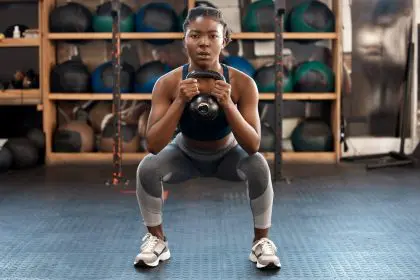In the rich tapestry of American labor history, the threads woven by Black women and Latinas have often been overlooked. Yet, their contributions have been integral to the fabric of the labor movement since its inception. From the cotton fields of the antebellum South to the factories of the Industrial Revolution, these women have been at the forefront of the fight for workers’ rights, often facing dual discrimination based on both their gender and race.
Today, we’re witnessing a remarkable shift in the landscape of labor unions across the United States. Black women and Latinas are not just participating in unions; they’re leading them, bringing their unique perspectives and experiences to the highest echelons of labor leadership. This transformation is not merely about representation; it signifies a broader movement towards inclusivity and equity within the labor movement, building on a legacy that spans generations.
The historical roots of Black female and Latina union involvement
To truly appreciate the significance of the current rise of Black and Latina women in union leadership, we must first understand the historical context of their involvement in the labor movement.
During the late 19th and early 20th centuries, as industrialization swept across America, Black women and Latinas found themselves at the bottom rung of the economic ladder. Often relegated to the most dangerous and lowest-paying jobs, these women faced exploitation on multiple fronts. However, they were far from passive victims.
In the face of adversity, they organized. Black laundresses in Atlanta formed a union in 1881, demanding better wages and working conditions. Latina garment workers in New York and Chicago joined the International Ladies’ Garment Workers’ Union (ILGWU) between 1932 to 1966, according to the National Park Service, playing crucial roles in strikes and organizing efforts.
These early efforts laid the groundwork for future generations of Black women and Latinas in the labor movement. They demonstrated that collective action could be a powerful tool for change, even in the face of systemic racism and sexism.
The Civil Rights era and union involvement
The Civil Rights Movement of the 1950s and 1960s brought renewed focus to the intersection of racial and economic justice. Black women like Dorothy Lee Bolden, who founded the National Domestic Workers Union of America in 1968, recognized that labor rights were inextricably linked to civil rights.
Similarly, Latina labor leaders like Dolores Huerta co-founded the National Farmworkers Association — later the United Farm Workers — in 1962, fighting for the rights of agricultural workers who were predominantly Chicanos and Filipinos.
This era saw an increase in Black women and Latinas joining unions across various sectors. They brought with them a deep understanding of the interconnected nature of social and economic justice, enriching the labor movement with their perspectives and experiences.
The contemporary landscape: Breaking barriers in union leadership
Fast forward to today, and we’re seeing the fruits of these decades of struggle and perseverance. Black women and Latinas are not just joining unions in greater numbers; they’re ascending to leadership positions, breaking barriers that have stood for generations.
Becky Pringle, a Black woman, leads the National Education Association, the largest union in the nation. Bonnie Castillo, the first Latina to serve as the executive director of National Nurses United, has been instrumental in advocating for nurses’ rights, especially during the COVID-19 pandemic.
Perhaps most notably, April Verrett became the first Black woman to lead the Service Employees International Union (SEIU), an organization where approximately 60 percent of service workers are people of color, with two-thirds being women.
The impact of diverse leadership
The rise of Black women and Latinas to union leadership positions is more than just a symbolic victory. It’s having tangible effects on union priorities and strategies.
These leaders are bringing fresh perspectives to longstanding issues. They’re advocating for policies that enhance family-friendly benefits for union workers, including improved healthcare coverage, parental leave and stronger protections against workplace harassment. These issues, while important for all workers, often have a disproportionate impact on women of color.
Moreover, their leadership is crucial in addressing the specific challenges faced by Black female and Latina workers. They understand firsthand the intersectionality of race, gender and class, and how these factors can compound to create unique barriers in the workplace.
Challenges and opportunities
Despite these advancements, challenges persist. Men still have a higher union membership rate than women, with rates of 10.5 percent for men compared to 9.5 percent for women, according to the U.S. Bureau of Labor Statistics. Workplace sexual harassment and biases remain prevalent in many settings.
However, there are signs of progress. Recent statistics reveal a slight increase in union membership rates among Black and Latina women. In 2023, the membership rate for Black women rose from 10.3 percent to 10.5 percent, while Latinas saw an increase from 8.5 percent to 8.8 percent.
These gains, while modest, are significant in the context of overall declining union membership. They suggest that Black women and Latinas are increasingly recognizing the value of union membership and collective bargaining in advancing their economic interests.
The road ahead: Empowering future generations
As more Black women and Latinas assume leadership roles in unions, they’re not just changing the face of labor leadership; they’re inspiring the next generation. Their success serves as a powerful testament to what’s possible, encouraging young women of color to see themselves as future leaders in the labor movement.
These leaders are also working to create pathways for others to follow in their footsteps. Many are implementing mentorship programs and leadership development initiatives specifically targeted at women of color within their unions.
The broader implications for the labor movement
The increasing prominence of Black women and Latinas in union leadership comes at a critical time for the labor movement. As unions face challenges from the Supreme Court and various policy changes that threaten workers’ rights, diverse leadership is more important than ever.
These leaders bring with them a deep understanding of the importance of coalition-building and intersectional approaches to labor organizing. They recognize that the struggles of workers are interconnected with broader issues of racial and gender equity, environmental justice, and immigrant rights.
By broadening the scope of union advocacy, these leaders are helping to revitalize the labor movement, making it more relevant and responsive to the needs of an increasingly diverse workforce.
As we look to the future, it’s clear that the leadership of Black women and Latinas will be crucial in shaping the direction of the labor movement. Their experiences, perspectives and leadership styles are helping to create more inclusive, equitable, and effective unions.
In doing so, they’re not just changing the face of labor leadership; they’re transforming the very nature of work in America. They’re proving that when we break down barriers and amplify diverse voices, we all benefit. The labor movement — and indeed the nation as a whole — is stronger for their leadership.
















